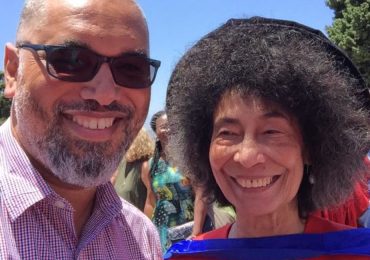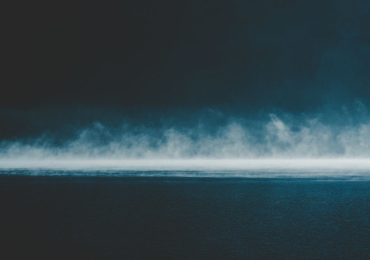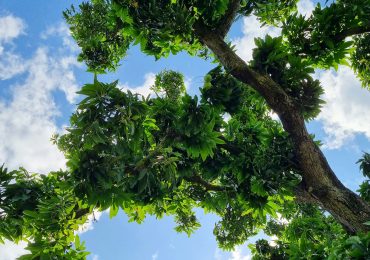Cities and mining
Underneath Johannesburg, imagine hollow cities, stretching from Soweto all the way to Turffontein, and further. As the city chugs on over ground so it does underground. Overlapping in equal pedestrian boredom. Tranquil and violent. The two oblivious to the other’s existence. The mining, begun in 1886, the inevitable first hacking of the earth for nothing else but profit. Across the city, above it, around it, mounds of white soil stand like reminders of what happens when capitalism digs its way up from the belly of the planet, and then chows what lies on top. Then immigration, urbanisation, capital investment, and labour migrancy. Since the early 2000s, every now and then newspapers run stories about ‘millions of litres of highly acidic mine water is rising up under Johannesburg’ and how, if left unchecked, it ‘could spill out into its streets’. Half myth, that. But that’s of course the city. Opinions come from one pocket while profits follow into the other. The city remains as monolith. The only thing that exists is what is on, under, the ground.
Above the ground, everything is up to be snatched, even humans. On the tight streets, tar road spilling onto the pavement, shops spilling into the road, a man was stabbed a number of times and everyone turned spectator instead of intervening. Behind Robertsham, not far from the industrial clusters of various companies, bending steel hidden by mounds of white soil, is a small community. There the noise of the city is filtered out, the place listens only to itself. A tragedy, that. Nothing is as devastating as the raging of inner inadequacies. The overwhelming noise of the city might not come with much peace but it does come with distractions. Looking outward, to the chaos, is suspending the turmoil within, is finding peace. From the houses there, a white mound of soil completely obscures the city. Ascending it, stepping carefully on the thin, unstable mined soil, arriving at the precipice, one emerges first to Turffontein, then to the city at large, present in all its gore and glory.
Communities, mostly poor and black, find themselves inhaling the remaining fumes, in insignificant amounts, but with lasting effects. Houses stretch over lands of death. But where else to go? Good land is overpriced and privatised.
The mine in Taung, where the Taung Child, Australopithecus africanus, was discovered in 1924, hangs above the community as both a tourist attraction and poverty sledgehammer. There is mining there now.
The number of abandoned mines is staggering. Six thousand.
Cities and jungle
The jungle and city overlap inelegantly. The one does not take over where the other stops. Often there’s a duel for space. The jungle pushing the city out of the way and the city pushing the jungle out of the way. Nestled on Long Street in Cape Town, Madam Taitou, an Ethiopian restaurant, has been taken over by the jungle. Logs and branches decorate it, inserting themselves into the walls, working their way into the floor. Every now and then patrons emerge from behind logs, hands first, finding balance, and then whole. Manmade, of course, this jungle, but the hallmarks, the mimicking, is obvious.
Every other city plants trees as a gimmick while also flooding the environment with more tarred roads, highways and pedestrian unfriendly streets.
For Johannesburg, city and jungle are intertwined, and have always been, from the beginning. The city rose from the forest and now people negotiate the terrain every day. An unfair fight indeed. Trees constantly chopped up to make space for a mall or some oddly named residential complex.
From the writing desk, on a third floor, reddish tiles poke through below the trees, and the trees droop above them. In the morning, the trees are silhouetted as the sun rises, and then as it hangs above them, they bloom.
Cities and landmarks
Not the fixed landmarks. Not the statues. Not the buildings. But rather the ever-shifting, undependable landmarks. In the winding and leafy suburbs in Rondebosch, Cape Town, a fellow taxi passenger yelled ‘green house’ and the taxi stopped next to it, except the house was not green. The story is that it was green for years and recently had been painted an off-maroon colour. That house will remain green, even if another owner moves in and decides to repaint it again.
A long time ago, making my way to Randburg, DStv, the taxi driver pointed in a vague direction and instructed me to turn into a building where every Friday, from the second floor, someone blows a saxophone. Easy to hear a saxophone. Except it was not Friday. The landmark was there but it was absent. The walk down that road, past Oak Avenue, past office blocks, to stare at the house the taxi driver had mentioned, even to hear the saxophone. Only it was not a Friday and there was no saxophone.
Cities and beauty
There is, at the bottom of Rabie Street, in Fontainebleau, Randburg, at the end of the road, before the park that houses the electricity station, a house so beautiful it hurts. The house is only visible by its roof. A strange, beautiful roof that droops down until it disappears behind trees. From another angle, a road that intersects from the suburbs, the house appears to be concealed, covered in a dark tile-textured blanket. At night the house disappears and only reappears in the morning.
Cities and ugliness
There’s a slight incline from town towards Braamfontein, going up against Park Station, emerging at the bus station. Further on, at De Korte and Rissik Street, the City of Joburg Council Chamber stands. From afar and from close up the building looks like a toy. Built in 2017, with a scale of 2000 sqm, and costing R280 million, the building is nothing but a toy. Come night, the cylindrical structure glows, perhaps too much, like someone yelling to be loved at everyone that walks past. Designed to represent a calabash, and referencing the traditional round kraal, the building leans on these references, rather than being a complete building. Inside it has neatly installed panelling, carefully measured, which opens up to the light and directs it. Except love is about first sight, even for architecture. Over the years, the building has failed to grow on me, and by now it may be too late.
Cities and stars
Out in Taung, on the edge of the mine, where the child’s skull was found, where the former soldier training grounds are, the stars shine uninterrupted. If you look up in the city, past the buildings, you might, if you are lucky, catch glimpses of them. The debate is ongoing about how the city interferes with the natural order of things. If it isn’t shooting out fumes of toxic gas, it is throwing up rays of light, obscuring the sky. In far-flung places, where the air is clean, at night the stars are splattered across the sky, glistening until they begin to look like they’re fading into each other.
Cities and quiet
If you stand still in central Johannesburg, your own thinking voice will be drowned by the noise around you, the drumming chaos. The city understands this well and has carved out many places of sanctuary. Gardens, parks and hiking spots. Depending on the thickness of the trees, the distance of the park, these allow an intermittent period of escaping the city, to exist in some quiet, temporarily. On the drive home the noise of the city returns, and persists even in our sleep. The allure of these parks is great, but you cannot escape the city for too long. And even in these fleeting moments of refuge, there is the everlasting threat that the city has embedded its chaos within us, that one cannot love it, or miss it, without embracing its anarchy.
Cities and night
At night, Jozi is dead, unless you are the killer.
Cities and highways
In Port Elizabeth, the highway in the inner city is a geometric maze, road lanes flowing into each other, becoming one, and then separating again. It’s more than an engineering feat. It’s a magic trick. From one specific angle, a lane seems to be entering into a building, driving through, but it isn’t.
In Johannesburg, the highways are contested spaces, trucks squeezing out small cars, taxis bullying everyone, slow drivers hogging fast lanes. Get on any highway on the wrong day and you may be there till evening. Escaping with aching knees and thinned patience.
In Cape Town, the Foreshore Freeway Bridge extends quietly towards town from the Waterfront, into the air, and then stops. It now hangs there, unmistakably sticking out. This is a cityscape that attracts all kinds of attention. (Unless you live there, in which case it is invisible.) Films have been shot there. Children spend their afternoons there, their legs dangling naively and dangerously. Tourists, on their way to the Waterfront, look and marvel at this staggering miscalculation.
Cities and transport
In the Metrorail train on the central line in Cape Town, commuters are packed tight, in forced intimacy. At every station they shuffle, grudgingly making way for those disembarking, then those embarking, replacing them where they stood. In between the coaches, some commuters stand, feeling the air through their hair, breathing fresh air, flirting with death. There is no mercy here, old people stand and pray their weak knees don’t crumble beneath them, while young people sit, heads bowed, shamelessly avoiding eye contact. Friends, sitting across from each other, have full-on conversations. Often the rhythm is disturbed by travelling pastors, walking up and down, preaching in every carriage in turn.
In some coaches, as one walks through the train, the thudding on the walls can be heard, and the church choir chanting their hymns. There is no atheist here. At least it seems. On some days, the preaching encapsulates everyone, the ones going to look for work, the ones giving up on life. In this moment, the commuters hold hands and unite in something bigger than them, faith.
Cities and language
Dragging luggage through Murtala Muhammed International Airport, Lagos, Nigeria, a passenger is cornered by two security officers. At a distance, the hosts there to collect the passenger wait. One of the women instructs ‘Open your bag’. For a while there is confusion. Not only about the message but about to whom she is speaking. She gestures, but not clearly enough because the confusion doesn’t stop. Impatiently, she says, ‘Do you not speak English, oga?’
- Guest City Editor Lidudumalingani is a writer, filmmaker and photographer, and winner of the 2016 Caine Prize. Follow him on Instagram and Twitter.





